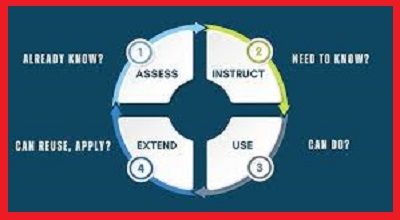A Framework for Lesson Planning
The latest Framework for Lesson Planning. Lesson planning is a crucial component of effective teaching. It provides a structured approach to delivering educational content, ensuring that learning objectives are met and students are engaged. While there are many different approaches and frameworks for lesson planning. Here’s a general framework that can be adapted to suit various teaching contexts:
Identify Learning Objectives:
- Start by clearly defining the specific learning objectives. Or outcomes you want your students to achieve during the lesson. What should they know or be able to do by the end of the lesson?
Assess Prior Knowledge:
- Determine what your students already know about the topic. This will help you tailor your lesson to their current level of understanding and build on their prior knowledge.
Choose Content and Resources:
- Select the content, materials, and resources that will help you convey the subject matter effectively. This can include textbooks, handouts, multimedia, and technology tools.
Plan Engaging Activities:
- Create a variety of engaging activities and teaching strategies to facilitate active learning. These can include discussions, group work, experiments, debates, and problem-solving tasks.
Set a Lesson Structure:
- Organize the lesson into clear sections, such as an introduction, main content, and conclusion. Consider the time allocation for each part to ensure a balanced flow.
Incorporate Assessment and Feedback:
- Plan formative assessment activities to check for student understanding during the lesson. Be prepared to provide immediate feedback to help students make progress.
Differentiate Instruction:
- Adapt your teaching methods to accommodate diverse learning styles and abilities. Consider how you can provide support for struggling students and challenge those who need more advanced content.
Sequencing and Timing:
- Arrange the activities and content in a logical sequence. Be mindful of time management to ensure that you can cover all planned material within the allocated time.
Consider Classroom Management:
- Think about how you will manage the classroom, including rules, routines, and procedures to maintain a positive and productive learning environment.
Reflection and Flexibility:
- After the lesson, reflect on what went well and what could be improved. Use this feedback to adapt future lessons for continuous improvement.
Assessment and Evaluation:
- After the lesson, assess whether the learning objectives were met and whether the students’ needs were addressed. This step will help you adjust your teaching methods and content for future lessons.
Alignment with Curriculum Standards:
- Ensure that your lesson plan aligns with the educational standards and goals set by your school, district, or educational system.
Incorporate Technology:
- If applicable, integrate technology into your lesson plan to enhance learning. This could include the use of online resources, educational software, or interactive whiteboards.
Consider Special Needs and Inclusivity:
- Address the needs of students with disabilities or special requirements, ensuring that your lesson plan is inclusive and accessible to all.
Communication and Parent Involvement:
- Consider how you will communicate the lesson plan and its objectives to students’ parents. Or guardians, and involve them in their child’s learning process when appropriate.
At Last;
Remember that A Framework for lesson planning is a dynamic process, and flexibility is essential. It’s important to adapt your plan based on the feedback and needs of your students to ensure effective teaching and learning.
